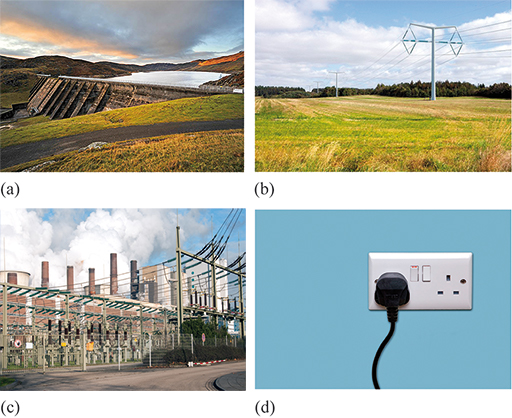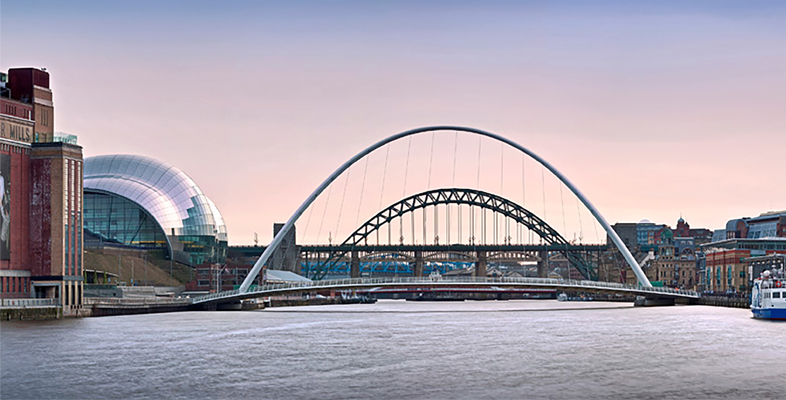1.2 Design is more than products and objects
Some products are not much use on their own: they require other elements around them to enable them to work. For instance, your mobile phone wouldn’t be much use without a whole range of supporting products and systems to enable it. These other elements are also designed.
Consider the design of the electricity supply system in the UK. In particular, think about the infrastructure that supports it (the power stations that generate the electricity, the wires that transport it, the substations along the route), the individual products used to access that system (sockets, wiring, light fittings), and then the service provided (energy companies, maintenance agreements). It would not be possible to design one without the other – the products depend on the system of electricity supplied, and the supply of electricity depends on the demand created by the products (Figure 6).

Behind this simple relationship is an entire range of products, specifications, systems and services that are all required to ensure the consistent supply of electricity. Even the way in which these elements are used, a process, can be designed. These terms are defined below.
Box 1 Design engineering terms
- Product – an object created to fulfil some function or purpose.
- Specification – a detailed description of the design and materials used to make something.
- Process – a series of events that are performed in sequence in order to fulfil some overall aim.
- Service – an activity or event provided in order to fulfil or support some specific need.
- System – a collection of elements that connect to form a coherent group that serves some purpose or function.
When the focus is only on the product itself, other elements around a design can sometimes be forgotten. Many design engineering companies now actively look beyond their products to design systems and services as well. For example, some lighting companies will now sell a ‘service to provide light’ rather than just individual light fittings. In doing so they provide a service to maintain (and even sometimes operate) a lighting system.
Design is more than simply creating a product – services, systems and processes can also be designed. Even when a design is simply for a product, the chances are it will require these other design elements to support it.
